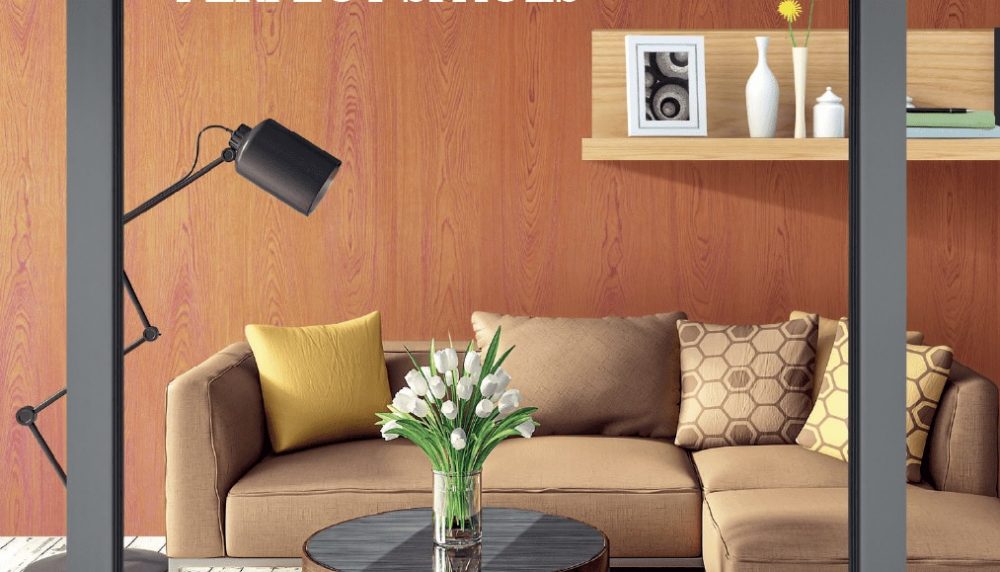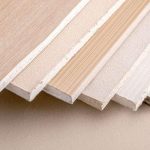It is not always good design to use only one colour or texture. Other times, it involves mixing finishes in a natural manner. Decorative laminate comes into the limelight there. The variety of shades, textures and patterns to select is limitless, and you can make a combination subtle or bold, depending on the mood you desire.
The best thing is, you do not require a large area and a designer budget. All you have to do is learn how to balance materials. That is the way you can use laminate sheets to your advantage without being excessive.
Start with One Dominant Finish
Every space needs a starting point. Pick one laminate finish that sets the base. This could be a wood tone, a soft matte colour, or a solid neutral. Once you have your primary laminate, the rest falls into place. Use this base for major furniture like wardrobes, kitchen cabinets, or wall units.
Let it guide your choices. If your main laminate is warm-toned, your accent laminates should complement, not clash. If it’s a bold colour, keep your secondary finishes calm.
Add a Second Laminate for Contrast
Once the base is set, bring in contrast. This could be in the form of a textured laminate on shutters, a gloss panel on drawers, or a dark wood tone on a light background. The goal is to create depth, not confusion.
When using two tones, try to balance warm and cool shades. For example, a walnut finish pairs well with off-white or muted grey. A glossy white can sit next to a deep oak pattern. The key is to keep one finish dominant and let the second one act as a visual break.
Play with Texture, Not Just Colour
Many people focus only on colour, but texture matters just as much. Decorative laminate is available in suede, stone, matte, high gloss, fabric, and even metallic finishes. Mixing textures can give your space a high-end feel without changing the colour palette too much.
A matte base with a high-gloss highlight. A woodgrain laminate paired with a stone-textured finish. A plain surface matched with a linen-effect laminate. These combinations work well in living rooms, bedrooms, and even kitchens.
Layer Laminates in Zones
Don’t apply every mix in one place. Break it into zones. In a bedroom, you could use one laminate for wardrobes, another for side tables, and a third for the headboard. In a kitchen, you can assign different laminates to the top and bottom cabinets.
Zoning helps each area feel distinct while keeping the overall design tied together. It also allows you to repeat finishes in small ways, like using the wardrobe laminate for a drawer handle or shelf edge.
Keep the Pattern Flow Consistent
If you’re using laminate sheets with visible grains or patterns, make sure the flow stays consistent. For example, all horizontal grains should run in the same direction. Mixing vertical and horizontal patterns randomly can make the space look cluttered.
Use patterns carefully. Too many bold grains or lines in one spot can overwhelm the space. Balance bold textures with calm, solid laminates. That keeps the look fresh and intentional.
Use Accent Laminates with Restraint
Accent laminates are meant to stand out. But only when used sparingly. Pick one element to highlight. Maybe the wardrobe door, the kitchen island, or a TV panel. Don’t apply the same bold pattern to every cabinet or corner. That reduces its impact.
One metallic finish. One abstract print. One gloss panel. That’s enough to lift the entire space without overpowering it.
Stick to Two or Three Laminates Per Space
It’s tempting to try every design you love. But in practice, too many finishes can make a space feel confused. Stick to two or three laminates in one room. One for the base, one for contrast, and one optional accent. This keeps the palette tight and the design clean.
If your home follows an open layout, repeat the same laminates in different areas. That builds continuity and makes the entire space feel connected.
Test Combinations Before Finalising
Before placing an order, test your laminate combinations in real lighting. What looks good in a catalogue may look different under ceiling lights or sunlight. Place samples side by side and view them at different times of the day.
Also, keep in mind the floor and wall colours. Your laminates should not fight with them. They should complement the tones already in the space.
Conclusion
Mixing and layering laminates is a design trick that works in every kind of home. With the right combinations, laminate sheets can create texture, contrast, and depth in any room. Whether you’re redoing your kitchen, bedroom, or living area, learning to pair decorative laminate finishes like a pro makes all the difference. For high-quality laminates in endless design options, trust CenturyPly to help you bring your vision to life.



